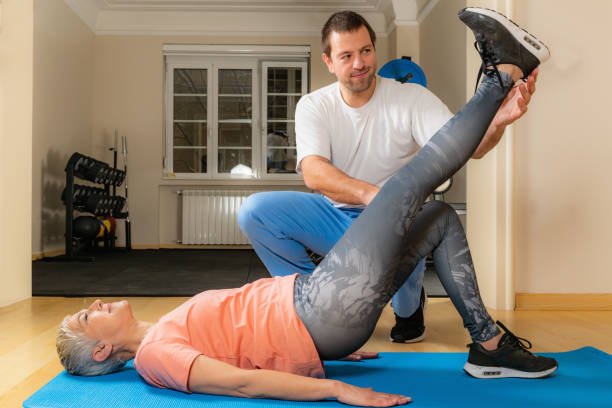Gout is a form of arthritis that affects millions of people worldwide. It is caused by a buildup of uric acid in the body, leading to painful inflammation in the joints. While medication and dietary changes can help manage gout, incorporating regular exercise into your routine can also provide significant benefits. In this article, we will explore the importance of exercise for gout management and provide tips for creating a gout-friendly workout routine.
Why Exercise is Important for Gout Management
Reduces Uric Acid Levels
Check out our Premium Pain Relief Patch options and Gain your life back!
by LOGAN WEAVER | @LGNWVR (https://unsplash.com/@lgnwvr)
One of the main benefits of exercise for gout management is its ability to reduce uric acid levels in the body. When we exercise, our muscles produce a compound called purine, which is then broken down into uric acid. However, regular exercise also helps to flush out excess uric acid through sweat and urine, reducing the risk of gout attacks.
Maintains Healthy Weight
Obesity is a significant risk factor for gout, as excess weight puts added pressure on the joints and can lead to increased uric acid levels. Regular exercise can help maintain a healthy weight, reducing the strain on the joints and decreasing the likelihood of gout attacks.
Improves Joint Function
Gout can cause stiffness and limited mobility in the affected joints, making it challenging to perform daily activities. Exercise can help improve joint function by increasing flexibility and range of motion. It also strengthens the muscles surrounding the joints, providing better support and reducing the risk of injury.
Crafting a Gout-Friendly Workout Routine
When creating a workout routine for gout management, it is essential to consider the type and intensity of exercises. Here are some tips for crafting a gout-friendly workout routine:
Low-Impact Exercises
by Farhad Ibrahimzade (https://unsplash.com/@ferhadd)
Low-impact exercises are gentle on the joints and are ideal for individuals with gout. These exercises include activities like swimming, cycling, and walking. They provide cardiovascular benefits without putting too much strain on the joints.
Strength Training
Strength training is crucial for maintaining healthy joints and muscles. However, it is essential to choose exercises that do not put too much pressure on the affected joints. For example, instead of traditional squats, try using resistance bands or performing leg lifts while lying on your back.
Stretching and Flexibility Exercises
Stretching and flexibility exercises are essential for improving joint function and reducing stiffness. Incorporate exercises like yoga or Pilates into your routine to increase flexibility and range of motion in the affected joints.
Avoid High-Impact Activities
High-impact activities like running, jumping, and contact sports can put too much strain on the joints and increase the risk of gout attacks. It is best to avoid these activities or modify them to reduce the impact on the joints.
Sample Gout-Friendly Workout Routine
Here is a sample workout routine that incorporates the tips mentioned above:
Warm-Up (5-10 minutes)
- Light jog or walk on the treadmill
- Arm circles
- Leg swings
- Shoulder rolls
Low-Impact Cardio (20-30 minutes)
- Cycling on a stationary bike
- Swimming laps
- Walking on the treadmill or outdoors
Strength Training (20-30 minutes)
- Bicep curls with resistance bands
- Leg lifts while lying on your back
- Chest presses with dumbbells
- Shoulder presses with resistance bands
Stretching and Flexibility (10-15 minutes)
- Yoga poses such as downward-facing dog, child’s pose, and warrior pose
- Pilates exercises like the hundred, roll-up, and spine stretch
Cool Down (5-10 minutes)
- Slow walk on the treadmill
- Arm and leg stretches
- Deep breathing exercises
Additional Tips for Managing Gout Through Exercise
- Stay hydrated: Drinking plenty of water helps to flush out excess uric acid from the body.
- Listen to your body: If you experience pain or discomfort during exercise, stop and rest. It is essential to find a balance between pushing yourself and avoiding overexertion.
- Consult with your doctor: Before starting any new exercise routine, it is crucial to consult with your doctor, especially if you have other health conditions or are taking medication for gout.
Conclusion
Incorporating regular exercise into your routine can provide significant benefits for managing gout. By choosing low-impact exercises, incorporating strength training and flexibility exercises, and avoiding high-impact activities, you can create a gout-friendly workout routine that helps reduce uric acid levels, maintain a healthy weight, and improve joint function. Remember to listen to your body and consult with your doctor before starting any new exercise routine. With the right approach, you can fuse gout management and fitness to lead a healthier, more active life.


